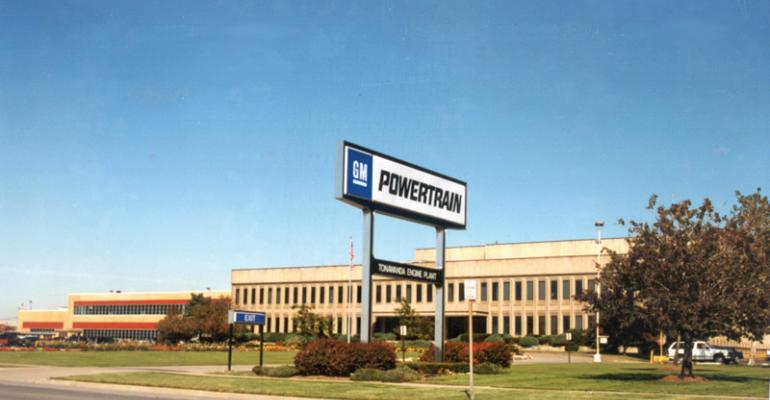TONAWANDA, NY – When General Motors’ Tonawanda engine assembly plant hits full stride later this year after investment updates, the historic facility will produce four versions of the auto maker’s fifth generation small-block engine at a daily output of 1,000 units.
The 75-year-old Tonawanda plant, which has built some of the raciest Chevrolet engines to travel U.S. roadways, received a $400 million investment last year to manufacture the 4.3L V-6, 5.3L V-8 and two variants of the 6.2L V-8 engines.
The engines will appear in nine GM models by 2015, including the auto maker’s redesigned-for-’14 Chevy Silverado and GMC Sierra large pickups and Chevy Corvette Stingray sport coupe.
The facility here also builds GM’s latest generation of 4-cyl. engines. Power-dense and fuel thrifty, 2.0L turbocharged and naturally aspirated 2.5L I-4 engines appear in products such as the Cadillac ATS, Chevy Malibu and future Cadillac CTS sedans. The 2.0L turbo in the ATS won a 2013 Ward’s 10 Best Engines award.
Later this year, Tonawanda will build its 71 millionth engine after doubling its work force with the addition of 1,500 jobs since 2009 to accommodate production of the Gen 5 V-8.
“We have invested 40,000 hours and $1.8 million in training the workforce to build these engines with uncompromising quality, and we’ve added some of the most flexible equipment ever used in the industry to make sure we can meet market demand,” Plant Manager Steve Finch says in a statement ahead of an event to mark the unofficial start of V-8 production.
Bob Coleman, shop chairman for United Auto Workers local 774 at Tonawanda, says GM’s outlay of $1 billion at the facility since 2010 demonstrates the auto maker’s continued confidence in the local workforce.
“I believe we have the finest engine builders in GM,” he says.
Additions to Tonawanda include new coordinate measuring machines, which check machining with greater speed and accuracy than previous units. The process includes a Zeiss position-check machine that examines more than 11,000 data points within 2.5 microns and a Hummel surface finish machine that checks surface finish textures at less than a micron. That’s less than 0.001 mm, or 0.000039 in., GM says.
Other key manufacturing investments include a track and trace system to help prevent misbuilds, and a smart automated cylinder head assembly system to help ensure more precise fits. It can assemble 48 parts in 40 seconds, the auto maker says.
GM also points to the addition of a fuel system connection inspection that uses helium to detect even the tiniest of leaks, down to less than one part per billion, for the high-pressure direct-injection system on each engine, and the capability to bore any number of cylinders through the same machine without stopping.
Another new machine at the plant uses three synchronistic robots to perform inspections such as thread checks, plug assembly and leak tests. Previously, GM says, those checks were performed one at a time and separate lines were required for 6- and 8-cyl. engines.
All of the Gen 5 engines, which feature new or enhanced technologies such as direct fuel injection, cylinder deactivation, variable valve timing and advanced combustion, are built on the same line and underscore the facility’s flexibility.
Tonawanda built the first-generation small-block V-8 when production of the then all-new engine design began in 1955.





